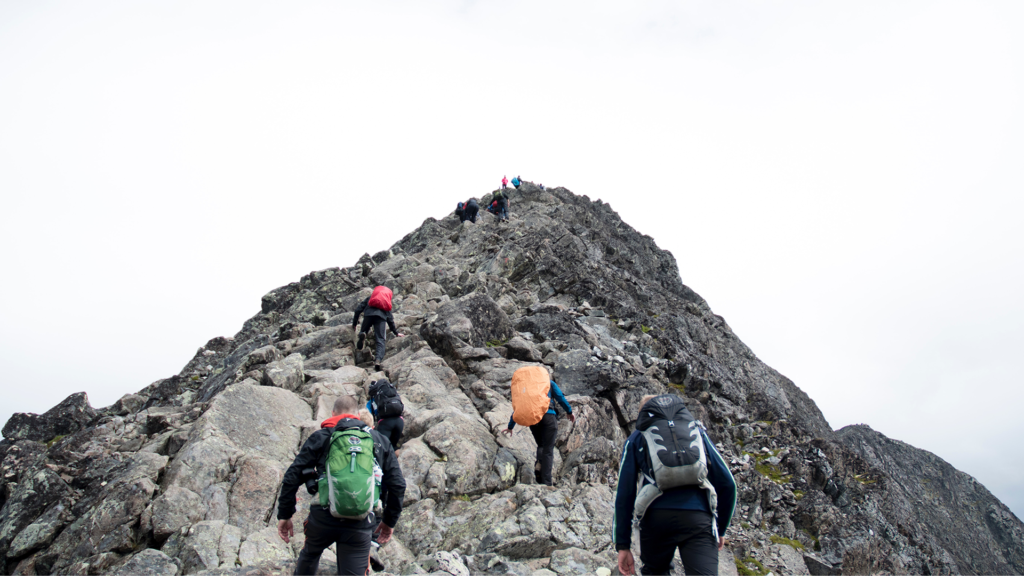While I love having a lot of time to prepare, there are times when we decide to participate in a project where that time is not too much and the client is in great need. Such was the case this week, where in the space of a few days my colleague and I (thank you @AgnesKropacz) did a needs analysis, designed a workshop and conducted it, all between Monday and Friday. An express service that is a prelude to further work with leaders who are leading the change.
Faces of Transformation.
I decided to do it because the project dealt with one of my favorite topics – people and organizations in the process of transformation. Over the 20 years I’ve spent in business and the last few years I’ve spent supporting it as a coach, trainer and consultant, I’ve had the opportunity to participate in countless smaller changes and more than 20 very large transformations that were related to either restructuring, merger or acquisition. Therefore, I know exactly how great and noticeable such a change is for people. How difficult it is to combine project work with “business-as-usual” and how much support leaders and employees need at this very moment.

It starts with the leaders.
Precisely in that order, because leaders are the first to experience the entire change by going through their grief curves: shock, disbelief, denial, anger, fear. They are the first to experience the “emotional roller coaster ride” that change causes, and the first to need an “oxygen mask” to then be able to take care of people and business. They are also the first to tame the change by making a choice, deciding that they will engage in the change, testing, accepting partially, and finally arriving (and sometimes not) at full commitment.
Shifted shift curves.
It’s good if they understand this and are aware that for their employees the change starts later and while they are already “bouncing back from the bottom,” their people may just be going through the most difficult period being in a state of shock, in denial, in resistance or in fear. Evidently, this came out yesterday when we conducted a short survey asking: where are you in this shift, and where are your employees? We received two beautifully passing curves, and this image alone helped us understand why, despite the efforts of the leaders, people are not yet committed, even if they try to look that way.

From drama to opportunity.
We based our workshop yesterday on Alan Seale’s model described in his book “Transforming Presence.” In the book, Alan Seale describes four levels of engagement: from Drama, through Situation and Choice, to Possibility. We found a perfect match with the first reactions of people in the shift, who often start with questions: Why is this happening to me? Why now? Who is to blame? Why are they doing this? Why me? The level of Drama, is a period when people tell stories to each other: I did this and he did that to me, I said this and she said that, we do this and they do that differently. It’s a period of Us and Them thinking, when Them is to blame for everything. Is that a bad thing? No, it’s normal. This is what the emotional response to change looks like to help us relieve tension. However, it is good if we can get out of the vicious circle of our stories and move on. Enter the next level of involvement – A situation when facts count and the answer to the question: how to fix it? How to get back to “normal”? Preferably as soon as possible. And here it turns out that with large, comprehensive changes there are no simple and quick solutions. Transformation is a journey that an organization embarks on without fully knowing how the journey will end, with only a vision of change (good if there is one) and hope for some results. And if there are no quick fixes then it is the Choice that counts , regarding my role and attitude in the change. At this level of engagement, we ask ourselves questions: Who do I want to be in this change? What qualities and values will guide me? What will I be faithful to? To finally move to the next level of engagement – Possibilities and look around with curiosity – What is trying to happen here? What does this change invite me to do? What opportunities does it offer?
Man a social being.
In addition to the opportunity to experience these four levels of involvement, yesterday’s workshop also brought the leaders an additional huge benefit: the feeling that they are not alone in all this, that the others are similarly experiencing the change, that they are playing to one goal and that they can count on each other. The opportunity to exchange opinions, concerns and hopes was invaluable and raised energy tremendously. Also to us – the handlers. That’s why we like this job so much 🙂 🙂
If you want to know more contact us.